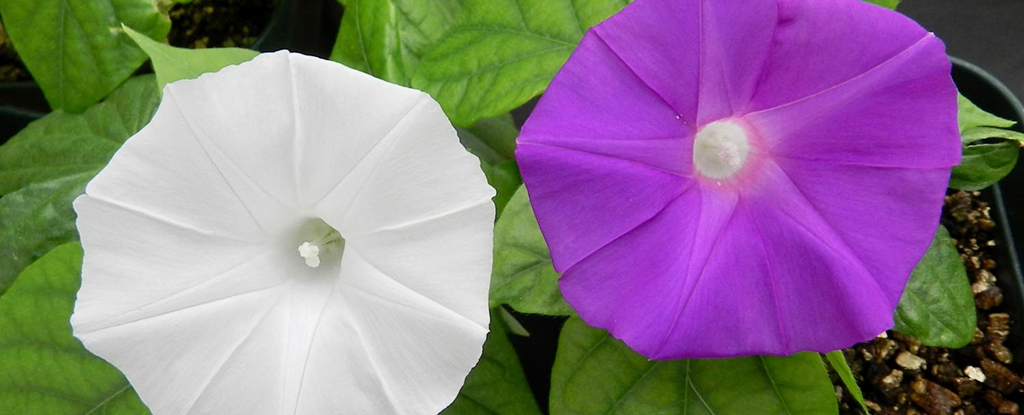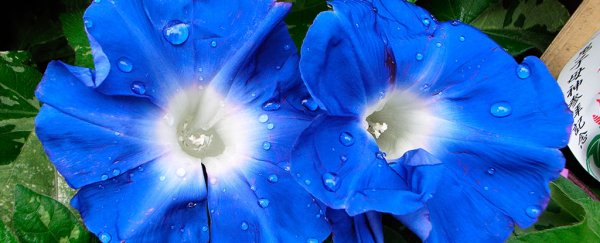We've never seen the CRISPR gene-editing tool used like this before. Scientists have turned a Japanese garden plant from violet to white by disrupting a single gene - yet more evidence of the huge potential that CRISPR holds.
The modified flower is the Japanese morning glory plant (the Ipomoea nil or Pharbitis nil), with researchers targeting only the gene responsible for flower colour without affecting the rest of the plant. But the potential here goes far beyond the cosmetic.
If you're new to CRISPR/Cas9 - the Cas9 enzyme is responsible for doing the DNA cutting - it lets scientists cut and paste genes with incredible precision, allowing for some pretty deep biological engineering.
While many are concerned about how these tools could be misused, they could also do a lot of good.
We've already seen it used to edit out genes causing disease in animals, though there are ethical questions about its possible future use in humans.
Now this team, from institutions across Japan, says the CRISPR/Cas9 technique is going to make a huge difference in the study and manipulation of plants.
"To our knowledge, this report is the first concerning flower colour changes in higher plants using CRISPR/Cas9 technology," writes the team of researchers.
The morning glory plant was chosen for this particular experiment as it's already part of the National BioResource Project (NBRP) in Japan – that means scientists already know a lot about its genetic coding, and the DNA blueprints are already available.
The team targeted the gene responsible for the colour of the plant's flowers, the dihydroflavonol-4-reductase-B (DFR-B) gene. With two other very closely related genes sitting either side of DFR-B, the challenge was to use CRISPR/Cas9 to snip out the right DNA strands very specifically without affecting the rest of the plant.
The enzyme produced by DFR-B is known to be responsible for producing the colour pigment anthocyanin, so shutting it off should turn the flowers white – and so it proved.
 University of Tsukuba
University of Tsukuba
Around 75 percent of the treated plant embryos grew up to flower with white rather than violet petals, and further analysis of the neighbouring genes showed no mutations, a testament to the accuracy of CRISPR/Cas9.
The study has consequences beyond potentially enabling you to colour your flower beds to order, because some of the next generation of plants – which also grew up with white flowers – showed no signs of the artificially introduced DNA.
That raises interesting questions about how our newly found gene editing powers could permanently change the course of nature, no matter how good or bad our intentions.
For now though, the scientists are promoting their study as a way of showing the accuracy and the potential of CRISPR/Cas9: the morning glory plant was introduced to Japan in the 8th century AD, and it wasn't until the 17th century that a white version appeared as the result of a genetic mutation.
What nature took around 850 years to achieve, CRISPR/Cas9 managed in less than 12 months, and that's both exciting and a little scary.
"The successful results of the present study will facilitate the modification of flower colours and shapes with targeted mutagenesis in Ipomoea nil and other ornamental flowers or vegetables," conclude the researchers.
The research has been published in Scientific Reports.
